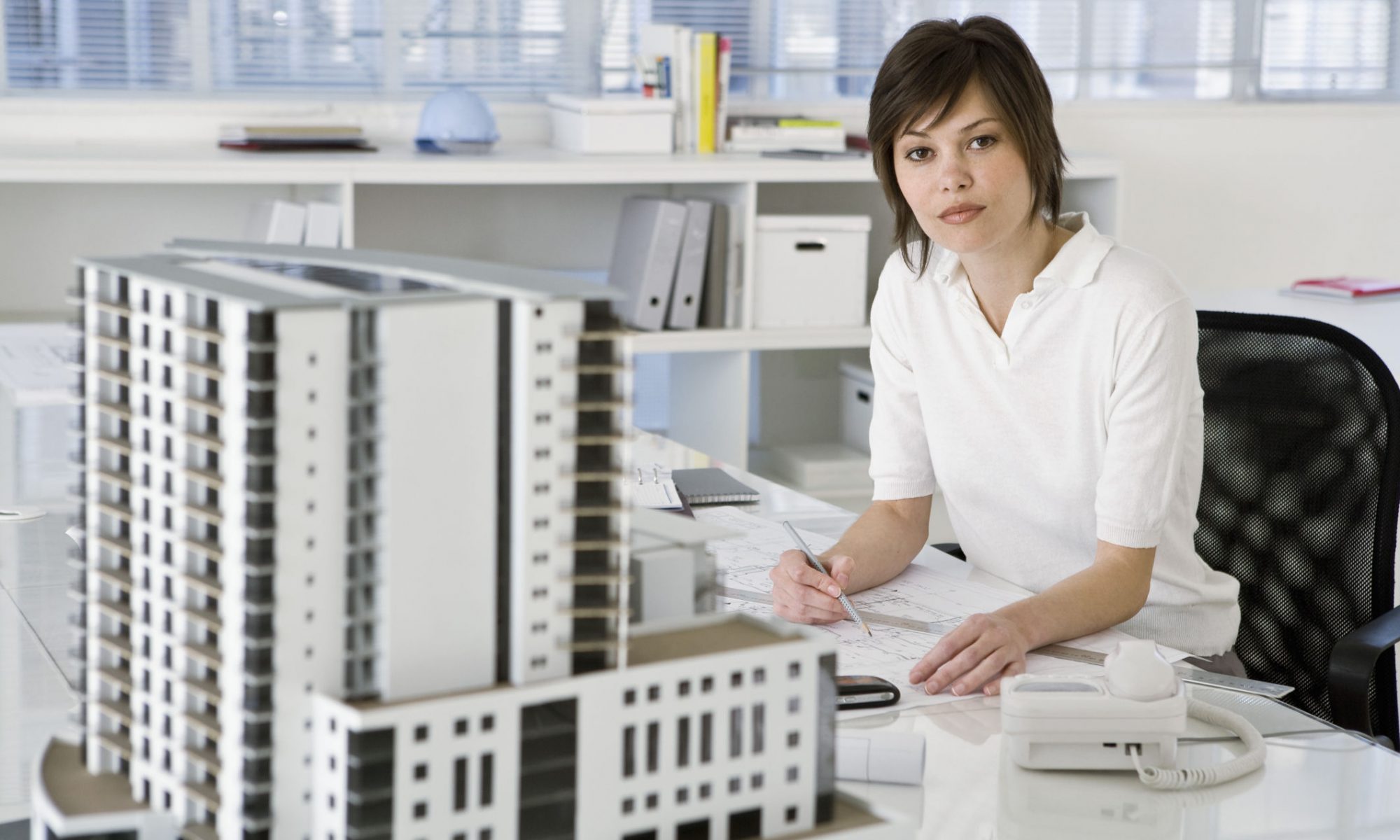<figure>
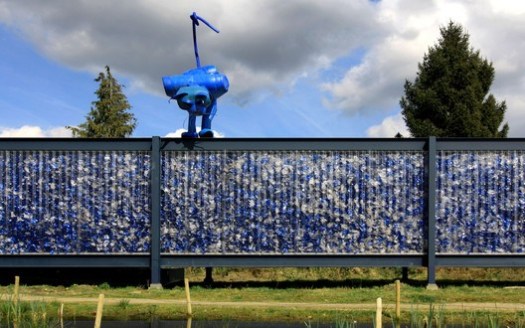 © Project.DWG / Artwork by Jelle de Graaf
Project.DWG and LOOS.FM have unveiled their PET pavilion, a temporary structure in a community park in The Netherlands that focuses on issues of sustainable building, recycling, and waste by rethinking the ways that buildings are developed, built, and used. Specifically, the pavilion is a study of the use of plastic waste as a building material.
Using the elevated framework of Ludwig Mies van der Rohe’s Farnsworth House, the structure consists of two monumental slabs in a steel framework. “From floor to ceiling, double-walled transparent corrugated sheets hold over 40,000 plastic bottles,” with bottle caps attached to bottlenecks supporting the system.
© Project.DWG / Artwork by Jelle de Graaf
Project.DWG and LOOS.FM have unveiled their PET pavilion, a temporary structure in a community park in The Netherlands that focuses on issues of sustainable building, recycling, and waste by rethinking the ways that buildings are developed, built, and used. Specifically, the pavilion is a study of the use of plastic waste as a building material.
Using the elevated framework of Ludwig Mies van der Rohe’s Farnsworth House, the structure consists of two monumental slabs in a steel framework. “From floor to ceiling, double-walled transparent corrugated sheets hold over 40,000 plastic bottles,” with bottle caps attached to bottlenecks supporting the system.
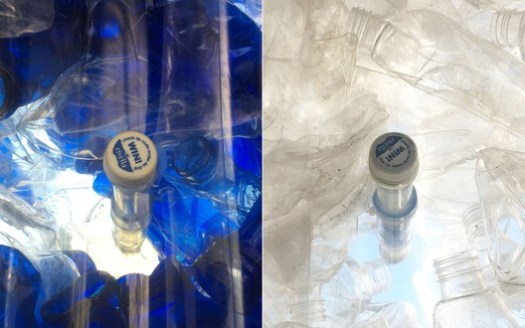 © Project.DWG
© Project.DWG
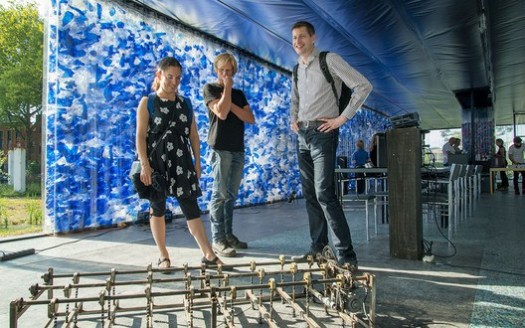 © Paul Clason / Artwork by Martin Oostenrijk
© Paul Clason / Artwork by Martin Oostenrijk
Rather than aiming to be a “sustainable” solution, the PET pavilion concentrates on exploring new possibilities and being an educational tool. For example, the overwhelming number of bottles
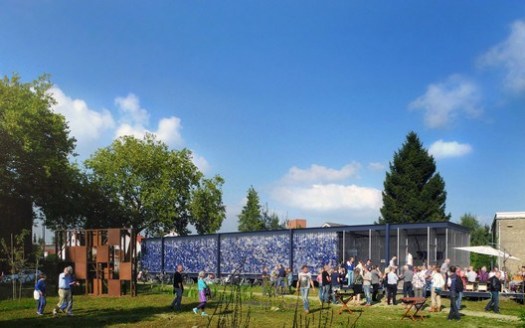
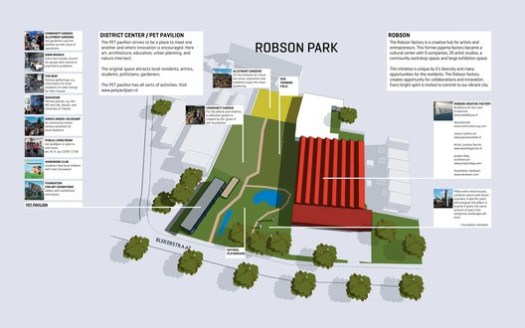
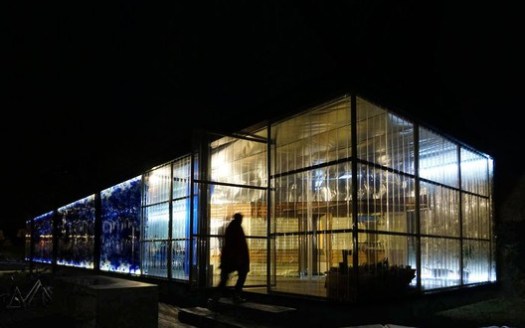
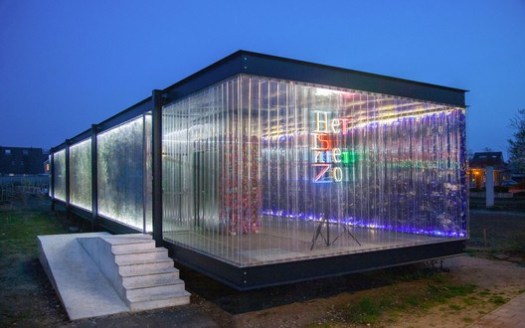

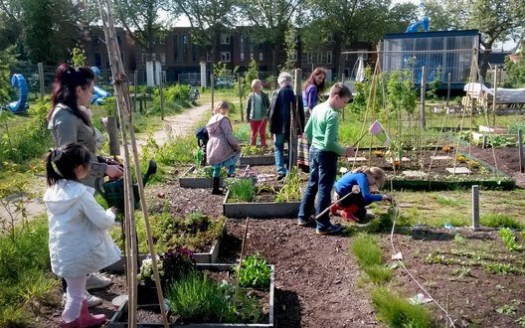
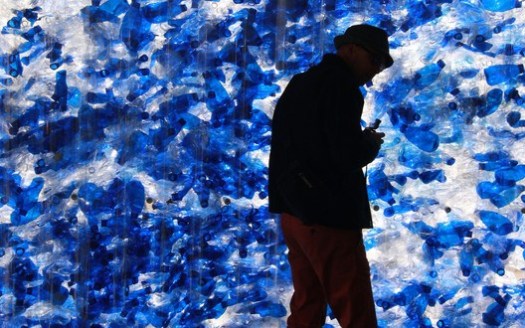
 © Project.DWG / Artwork by Martin Oostenrijk
© Project.DWG / Artwork by Martin Oostenrijk
Furthermore, the pavilion “shows that a temporary building can fully serve its purpose, before being reused or recycled, without losing material value,” unlike many permanent structures that utilize materials like concrete.
<div class="container-video">
<iframe
class="container-video__aspect-ratio"
src="https://www.youtube.com/embed/flMjFiHH-Gs?theme=light&showinfo=0&color=white"
frameborder="0"
allowfullscreen>
</iframe>
</div>
Reclaimed glass panels form a winter garden on the sunny side of the pavilion, where seven large pivoting doors open the entire corner of the building to the surrounding park, which is also a temporary space between development plans, and organized by the local community.
 © Project.DWG
© Project.DWG
During daytime, the translucent mass of crumpled shapes illuminates the interior. By night, the massive ‘curtains’ turn into an abstract lantern in the landscape described the architects.
 © Project.DWG / Artwork by Pim Muis
© Project.DWG / Artwork by Pim Muis
 © Marco van der Ruit / Artwork by André Boone
© Marco van der Ruit / Artwork by André Boone
Art exhibitions and interactive events occupy the interior of the pavilion, with the intention of making art accessible without a formal museum visit. Moreover, the space is used as a community meeting place, holding forums for the neighborhood council, and has become a “monumental impact” on the local social realm.
 © André Boone / Artwork by André Boone
© André Boone / Artwork by André Boone
 © Project.DWG / Artwork by Jelle de Graaf
© Project.DWG / Artwork by Jelle de Graaf
Creating and managing the PET pavilion has contributed to what the team understands as ‘more than architecture’ and the understanding that ‘architecture begins where construction ends.’
 © Project.DWG
© Project.DWG
Design Team: Michiel de Wit, Filip Jonker, Martijn Giebels
Management of the PET Pavilion after completion: LOOS.FM
Location: Enschede, The Netherlands
Area: 227 m2
Project Year: 2014 News via Project.DWG and LOOS.fm.
<img src="http://feeds.feedburner.com/~r/ArchDaily/~4/XMm8vN_leMA" height="1" width="1" alt=""/>
